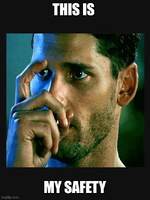“Notoriously unshootable” is a bit much...
This was the point of my post in a nutshell.
No. It means those you were shooting against weren’t skilled.
Yes, but I was (still am, to be honest) equally unskilled. My point being that 10mm recoil isn't the gigantic hindrance that it's being made out to be on this thread.
You do not know how anticipation or flinching works. Your grip, nor dry fire have anything to do with anticipation. Dry fire will actually make it worse. “Muscle memory” is not real, and again has nothing to do with flinching.
Hhmmm. You have a history of backing up what you say and being right, so I'll look at this as a learning opportunity for me.
If by "muscle memory is not real" you mean muscles don't actually contain little brains with memories inside, then yes, I agree. But when I used the term muscle memory I was referring to training a series of movements over and over so that they can be performed quickly and accurately while requiring less conscious attention to be taken away from present tasks like situational awareness. In this case, drawing and presenting the pistol to the firing position with sights aligned and on target and pressing the trigger smoothly without affecting sight alignment and trapping/resetting the trigger, can all be done on sort of autopilot leaving more brain power available for you to asses the situation, decide exactly when to fire, be moving to a better position, etc. By "muscle memory is not real" do you mean training does not allow you to perform movements like this more accurately & efficiently in a subconscious manner?
Now for the flinching or anticipation part, the way I understand (and I'm happy to be corrected if you can explain so that I understand better), if your repeated training teaches your brain that a specific step in this sequence produces a bang and sting in your palms and movement you didn't intend, then you will tend to subconsciously tense up and muscle into the gun right at that moment to brace against the shot your brain knows is coming. That's the anticipation & flinch, correct? But if you train the motions over and over without the bang (dry practice) you eliminate that response and do not incorporate a flinch into your subconscious routine.
Also, during live fire it's not always easy to recognize a flinch, but with dry practice it's obnoxiously obvious. Point in, have a buddy balance a dime on your front sight, press the trigger front to rear without letting the dime fall off.
So can you explain to me what you mean by "dry fire will actually make it worse,"?
The 10mm works. It’s that it does not functionally do anything that a 9mm doesn’t do, and yet it penetrates less, costs more, recoils more, is slower to shoot, causes more anticipation/flinching, and the pistols are bigger. None of those things are “advantages”. The same can be said for 357 sig, 40 S&W, and 45 auto.
Agreed. I don't disagree with the premise of your podcast that a CNS hit is the only maul-stopping shot, and the requirements to do that on a frontal charge are accuracy and enough penetration to get through the skull. Furthermore I'll accept that a bear skull isn't bulletproof and a 22mag may well punch through it. I also agree ounces equal pounds and there's an advantage to a 30 round pistol that weighs less than a 16 round pistol, and that a lighter recoiling pistol will be back on target some fraction more quickly than a heavier recoiling pistol. But that last part I think is getting blown out of proportion. I have a G17 and a G20 and even with full power 220 grain hard casts they're just not that different to shoot. It's not like we're talking about an airweight 44mag.
Last thing, you said 10mm penetrates less than 9mm. Is there a specific test you're basing that on? I've shot Underwood 220 hard cast 10mm through 14 water jugs (sorry, too poor for FBI gel).
I guess this is a good excuse to order up some 9mm hard cast to compare.


